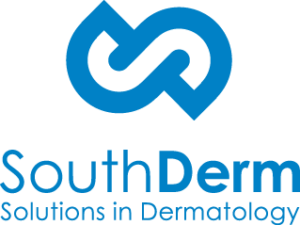What is a Dermatologist?
A dermatologist is a qualified medical doctor who, through additional training, obtains postgraduate qualifications to specialise in the identification and treatment of all skin issues. It takes more than 10 years of medical training to become a dermatologist. The expert dermatologists at SouthDerm specialise in, are consultants for, and carry out both medical and cosmetic procedures.
SouthDerm’s dermatologists treat patients of all ages, from babies to adults. Although diseases of the skin are many and varied, our dermatologists spend much of their time treating diseases such as skin cancer, caused by exposure to the sun. Through cosmetic procedures, we are also able to enhance your skin’s look and feel from the effects of overexposure to the sun’s damaging effects.
Other skin problems that are regularly managed by SouthDerm’s dermatologists are acne, eczema, skin infections, psoriasis, occupational dermatitis, hair and nail disorders, surveillance of moles, and excessive or problem sweating.
SouthDerm’s dermatologists are leaders in the identification and resolution of skin problems. Whether it is a medical skin issue or a cosmetic enhancement, you are in safe hands with our caring doctors and nursing staff.
HOW DO DERMATOLOGISTS TRAIN?
Dermatologists are initially trained as doctors, which takes 5–6 years of university study to gain a medical degree. This is followed by several years of full-time practice and training in a teaching hospital as a resident hospital doctor. Application can then be made to enter a five-year training program in dermatology.
Prior to entering a College’s training program, prospective trainees undertake additional study and scientific research in dermatology.
Early in the training program, trainees sit for the Clinical Sciences examination. Towards the end of the training program, trainees sit both written and oral components of the Fellowship examination. After passing the Fellowship examination and having completed the training program satisfactorily, a trainee is recommended for Fellowship of the Australasian College of Dermatologists (FACD).
Having gained the FACD, many dermatologists travel to dermatological centres overseas to gain post-Fellowship training or be involved in clinical and experimental research. Furthermore, dermatologists maintain their professional standards and develop new skills through participation in the College’s continuing professional development program.
WHAT TREATMENTS ARE USED BY DERMATOLOGISTS?
Advances in ultraviolet light therapy, photodynamic therapy, laser therapy and drug treatment have revolutionised dermatological therapies over the past few years.
As well, better understanding of skin diseases and skin cancers through advances in genetics, molecular biology, pathology and immunology has assisted dermatologists in the diagnosis and treatment of dermatological illnesses and cancers.
Many skin diseases can be treated with topical therapy, such as creams and lotions. These treatments have been researched by the dermatologists at SouthDerm and the results published internationally. However in Australia today, surgery is widely used by dermatologists in the treatment of skin cancers, including melanomas. This is why SouthDerm established its licensed and accredited day surgery centre. Radiotherapy is also utilised by dermatologists in the treatment of skin cancers.
DERMATOLOGISTS – AN OVERVIEW
- Dermatologists are experts in the diagnosis, treatment and prevention of skin cancers and skin diseases
- Dermatologists specialise in the management of skin problems such as acne, eczema, psoriasis, skin infections, hair and nail disorders, and occupational dermatitis
- Dermatologists provide advice concerning skin health, and treat cosmetic problems of the skin
- Dermatologists treat patients of all ages, from babies and children to adolescents and adults


